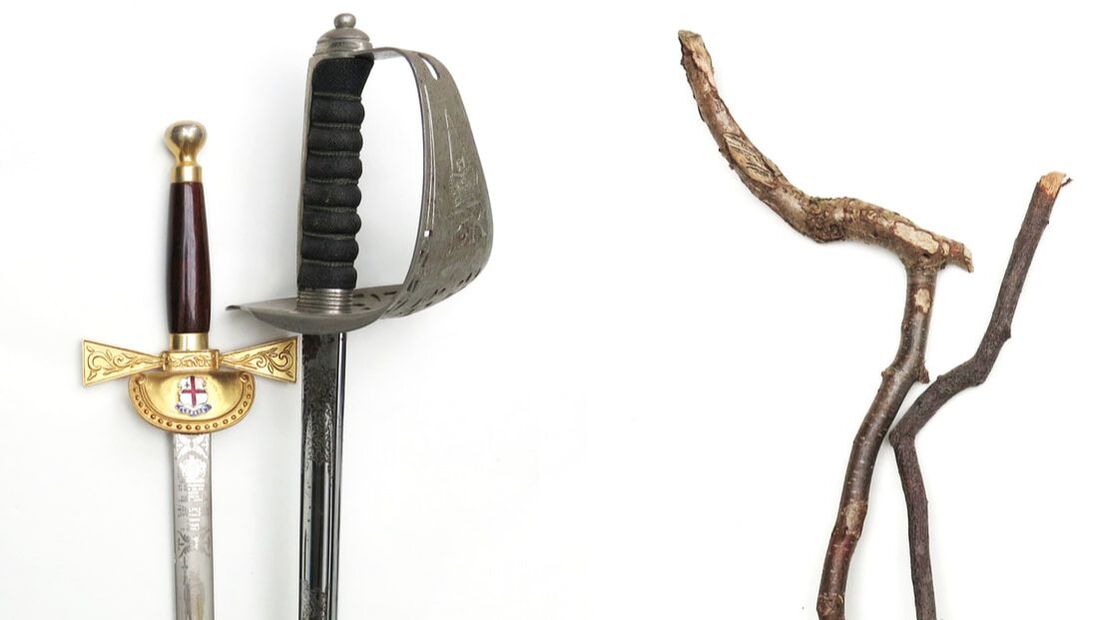|
Written by Clare Caro Imagination: the ability to bring to mind things and experiences that are not present. We are not born with imaginations already 'installed'. Imaginations are developed at a tremendous speed in childhood, through the environments we grow up in, and through play. Image Gathering In order to bring to mind images of an imagined item, you first have to have files of information to call upon. It would be impossible to imagine a cup if you have never seen, touched or held a cup before. Young children gather important information about the objects in their new world through exploratory play. This explains why babies are often found seeking anything and everything around them to explore. When a thing is new, never seen or experienced before, a child needs to feel it, taste it, smell it, weigh it, balance it, get inside it... and the longer children play with the new treasure, the more information they gather for an objects 'file'. File Names There is also a lot of language gathering going on in childhood, and the names of objects are picked up and learned too. The name lets the brain file all the information for easy retrieval. For example, if I say "feather", you retrieve all the sensory information you have about feathers from your file. If I say "binturong" you probably have an empty file. Image Recall When a child is engaged in imaginary play, they call up images from their memory files and 'alter their world'. Typically, children use objects in their surroundings to do this: the tree becomes a horse, or a pirate ship, or a shop counter. Children also call up images without physical objects to aid their play: in that space there is a dog, did you hear that car whizz by? In imaginary play, children live and play in a three-dimensional world, adding a fourth dimension of their own making. Internal Job Imagination is an internal job - not an external one. This is a really important point to get our heads around because when we understand that bringing images to mind is what develops the imagination, and what 'imagination' is, then we know exactly how to aid this internal development with our external help. Our External Job Part One - 'Download' Material To aid the development of imagination, first we can ensure that children have rich and meaningful experiences exploring the world. Real-life experiences offer imaginations authentic information for their files. Young children need time with real objects and situations to gather information, even better when in context. When a child finds a real pinecone on the forest floor, their mental file will be richer in sensory and context information than if they find a pinecone in an indoor display or treasure basket. A trip to the real Vet is where details are picked up on a Vet's behaviour, tools used and etiquette, all the images that later get played out in the imagination. It is our job to consider the authenticity of the object or experience that will be 'downloaded' as the 'image file' and used later to develop the imagination. What happens when children have files based on un-real objects or experiences? Sometimes children experience, explore and download a heavy diet of "pretend toys" or "pretend experiences". Image files become full of inauthentic information based on the look-a-like objects and themed scenes or kits. Imaginations need a foundation of image files first. The early exploratory play years are when we gather important information about our world. The more authentic those image files are the better in terms of setting up a solid foundation for the imaginary play to follow. Part Two - Imagination Building At around the age of two years old, we start to observe the first signs of imagination happening within the child when they take one object and use it in their play, with all the information of something else - an image in mind. Because mental images are being created in the mind, objects being used in imaginary play do not need to already have an image on them. This means that every toy with an image already on it, that is sold for 'imaginary play' is doing the 'external job'. If we don't actually need toys with images already on them, what can we provide that builds the imagination? Open-ended materials & loose parts develop imaginations. By 'open-ended', we mean objects that are open to interpretation and therefore become multi-purpose objects: a stick of wood can become a spoon, sausage, telephone, or sword. 'Loose parts' refers to materials that can be moved, used, combined - basically objects that are available for children to use in their play. Pictured; real swords and imaginary swords / open-ended loose parts. The child gathers images and sensory information about the objects in their world, then brings to mind that information in play by laying the 'image' onto another object. That is how we develop imagination. A stick will become a sword, spoon, sausage, or telephone based on the quality of information they have filed on that object under that name. Many people are astounded at how heavy a real sword is when they pick one up for the first time, simply because most sword files are based on a pretend toy. Whether children are in a setting where everything is provided for play, at home, or in the great outdoors, they will find what they need to facilitate their play. Our role is to choose environments with, or make available and accessible, open-ended materials & loose parts. We don't need to set up objects and imaginary scenes - we leave this fun, creative work for the child. “Play is the work of the child” - Maria Montessori When we give children image-ready "pretend toys", we might just be robbing them of the internal imagination-building opportunity. However, sometimes we also see pretend toys get used in play as something different to what they are representing. Some people (children and adults) can imagine a plastic toy slice of cucumber into money, or a wooden toy tomato into a fish - some people can take a pretend, image-ready toy and create an image in mind over the existing one. I speculate that this cannot happen without an apprenticeship with sensory-rich files and open-ended loose parts that got the imagination brain muscle flexed and strong enough to do this in the first place. Imagination - The Intellectual Gateway Many parents and people who work with young children are taking imagination development really seriously. They avoid having image-ready toys, costumes and kits in the child's environment and make a point of living an experience-rich life, with a variety of situations and people. Here's why: because the more experienced and developed the imagination is, the more skilled we are at communication, empathy, creativity, divergent thinking and problem-solving. "If we knew the critical nature of imagination, how it's the very core, the very foundation of all higher stages of learning and intellectual life, we would certainly look at the child differently." - Joseph Chilton Pearce Communication Most of the words we use to communicate require us to call up images in mind. We use words to 'paint an image' of what we are talking about, to get across information and ideas to others. For example, when we are listening to someone speaking a language we don't know, the words we hear don't bring up images or understanding. Communication is easier with someone who has a developed imagination. Something as simple as giving directions ("then at the book shop, you cross the road and find yourself in front of a church") only works if the person you are giving directions to has developed the ability to call up images and bring them into context. Empathy Empathy is our ability to 'put ourselves in the other person's shoes'. This requires all our skills for 'altering our world', to call upon images and sensory information so we can place ourselves in the role of another. It is only with this ability that we can truly get to see things from a completely different perspective than our own, to feel and sense what that person may be feeling and understand their position. The more practised these skills are, the easier it is to see from another point of view - even when our view is different from our own. Creativity Creativity and imagination are closely linked. While imagination is conjuring up images in mind of things that are not there, creativity is thinking up new ideas that are not there or have never existed before. Both deal in thoughts that are ‘unreal’ in the physical world and are working in the fourth dimension mentioned earlier. “Imagination is the beginning of creation. You imagine what you desire, you will what you imagine, and at last, you create what you will.” - George Bernard Shaw Divergent Thinking Divergent thinking is where we generate many ideas and images that explore many possibilities. One of the benefits of divergent thinking is that the thinker does not judge ideas as "right or wrong", "good or bad", and what could be considered a "mistake" is instead seen as an opportunity or challenge. Typically, divergent thinkers are less self-critical and open to new information, regardless of other people's opinions. Problem Solving How do you solve a problem? Problem-solving is an internal job, requiring us to think in images (imagination), to come up with ideas that are not yet there (creativity), and to explore as many different perspectives (empathy) and possibilities (divergent thinking) as we can think of. Finding solutions that work for everyone or will benefit all, is a skill. A skill that has its foundations in the internal development done in childhood. Life Skills We are not born with life skills already 'installed' - we develop the skills to communicate well, get along with others and problem solve. Developing the foundations for these skills is an important part of childhood. What life skills will today's children need for 'tomorrow'? Our children are growing up in a changing world, and it is uncertain what the future will look like environmentally, socially and economically. However, it is likely that a skill set built on the foundations of a strong imagination will be very useful for our future citizens. Pictured (left to right): 1, hoovering. 2, daggers, gold and guns. 3, a family in their house. At Nature Play we do not take toys or tools into our sessions. The children find objects within their environment to facilitate their play. Sticks become vacuum cleaners, props for a pirate game based on files downloaded from cartoons, and undergrowth becomes the house for a family. Children bring images with them based on the files they have stored in mind. They share their 'images in mind' with other children, and in so doing develop their ability to work toward a shared vision (aka unity). |
|
Copyright © 2024 Nature Play
|




 RSS Feed
RSS Feed